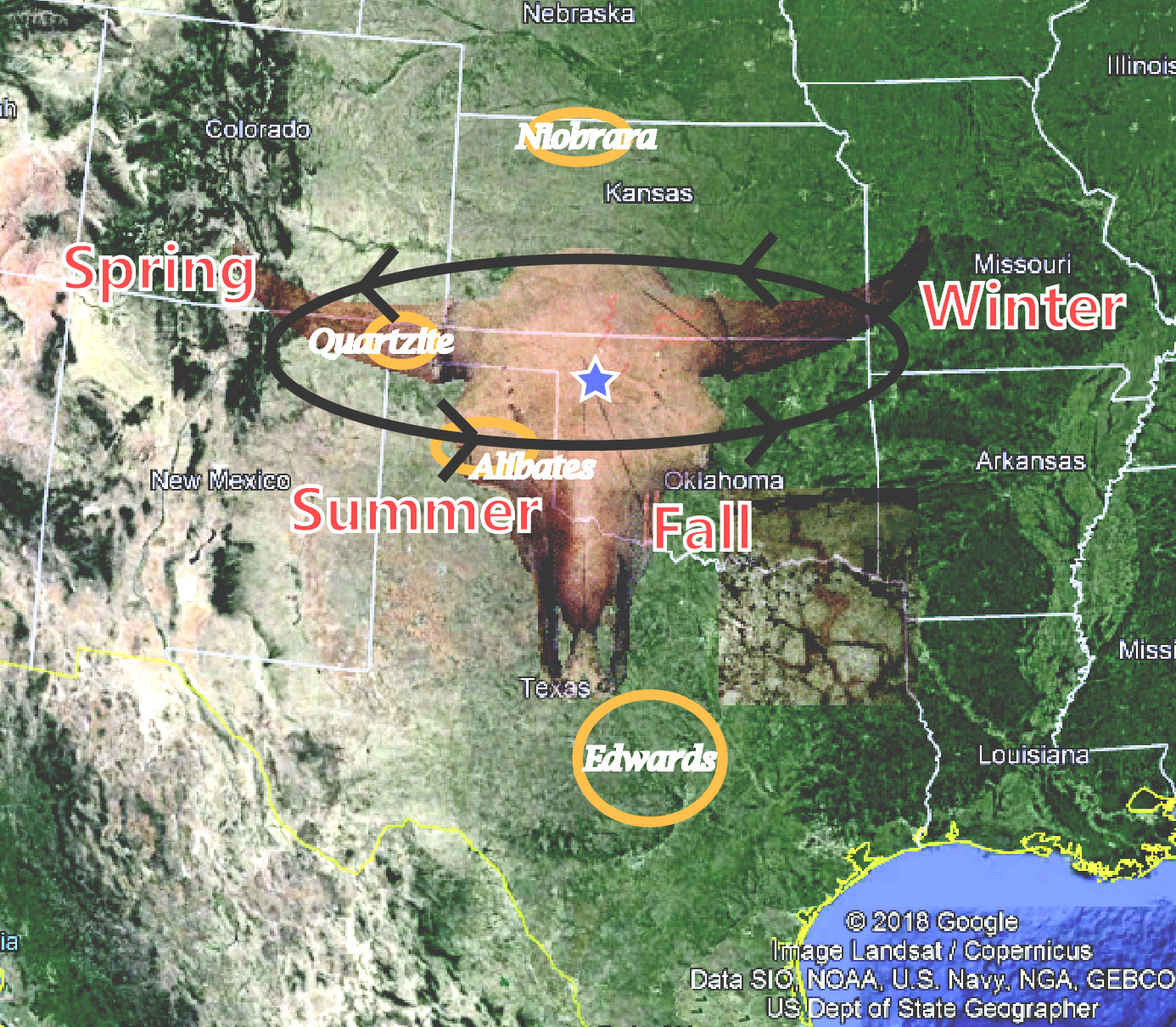2018-2019
How to Kill a Bison: The Development of Bison Hunting During Folsom Times
Thursday, November 8th 6:30pm
Giffels Auditorium, Old Main 201, University of Arkansas
Leland C. Bement, PhD, Oklahoma Archeological Survey

Following the late Pleistocene extinction of mammoths and other large animals, early cultures on the Plains of North America adapted their hunting style to be successful against the remaining largest mammal, bison. This presentation will discuss how early North American hunters integrated knowledge of bison behavior, landscape evolution, and environmental change to develop a highly successful hunting adaptation. Key changes in hunting technology are considered as well as possible developments in social adaptations during the Folsom period. Aspects of this hunting adaptation were still employed by bison hunters some 10,000 years later
Analyzing Conflict Damage to Cultural Heritage from Above: Results from the ASOR Cultural Heritage Initiatives in Syria, Iraq, and Libya
Thursday, March 14th 2019 6:30pm
Giffels Auditorium, Old Main 201, University of Arkansas
Dr. Susan Penacho, Project Manager, American Schools of Oriental Research Cultural Heritage Initiatives
Since the American Schools of Oriental Research (ASOR) Cultural Heritage Initiatives (CHI) was formed in August 2014, the project has produced over 2,000 individual reports of cultural heritage damage in Syria, Iraq, and Libya. ASOR CHI implements cultural property protection by documenting damage, promoting global awareness, and planning emergency and post-war responses. Conflicts in this region have damaged heritage sites from a variety of disturbances including military and civilian activity such as illegal excavations, and urban encroachment. Military activity ranks as the most frequent damage source, primarily incidents caused by explosives—mainly artillery shelling and airstrikes—as well as from gunfire. With an inventory of over 15,000 historic locations, ASOR CHI has monitored reported damage to cultural sites through media reports, in country documentation, and concurrent satellite based assessments. ASOR is also well situated to assist in stabilization projects and ground surveys as the conflicts come to an end. Utilizing the data collected by ASOR CHI, this talk will analyze the patterns and scale of damage to cultural heritage in Syria, Iraq, and Libya at both regional and country wide levels with the primary focus on satellite based analysis.